 Consider four clichés:
Consider four clichés:
If you don’t know where you’re going, you may never get there.
If you don’t know where you’re going, any road will take you there.
If you don’t know where you’re going, you’ll probably end up somewhere else.
If you don’t know where you’re going, you’ll never know when you’ve finally arrived.
I respectfully disagree.
In my experience:
If you don’t know where you’re going, nobody can stop you.
If you don’t know where you’re going, there’s no destination to scare you.
If you don’t know where you’re going, you may end up somewhere better.
If you don’t know where you’re going, it’s easy to hear unintentional music.
If you don’t know where you’re going, you can pivot and change mid-course.
If you don’t know where you’re going, the wheels of serendipity can set in motion.
My name is Scott, and I am geographically impotent.
Which isn’t always a bad thing. Sometimes you have to lose your way to find your home. But personally, I can’t imagine living in a world where you can’t get lost.
Today we’re going to talk about the value of having no sense of direction.
Feel free to let your brain wander:1. Intelligence is the great impediment. Admittedly, I didn’t put lot of thought into my first book. There was no strategy, no through line, no promise to the reader, no take home value for the buyer and no unique selling proposition for the target market.
I just wrote it because I wanted to write it. I wrote it because I had a story worth telling. And I wrote it because if I didn’t, my heart would never forgive me. So I just shipped the damn thing.
And when the book came out, it’s not like I wised up and got my act together. There was still marketing strategy. No social media push. And no finely orchestrated plan that was in perfect alignment with my personal vision statement and life purpose.
I just handed out copies to every single person I knew, along with two free nametags in the back of each book. That’s it. And because I wasn’t trying to make money – I was trying to make a point – the book ended up making history. All because the intention was pure, the process was organic and the art was completely selfish. Sweet.
Remember: When you know too much, you execute too little. How could you become dumber today?
2. Goals are for soccer players. The problem with goals is that you’re never really happy when you accomplish them. You just keep setting more goals. And you end up living in a perpetual state of dissatisfied expectation. Nothing but an infinite regression of marginally worthwhile accomplishments.
This is not healthy.
First of all, there’s more to life than accomplishing your goals. Being trumps doing any day of the week. And just because you’re not “getting things done” doesn’t mean you’re going to disappear. Secondly, life changes. Quickly. And often times, what you thought you wanted later proves to be irrelevant, redundant or erroneous.
Instead of deadlocking your life to an arbitrary list of pointless attachments, focus on your intention. Decide how you want to invest your life. And let go of your outdated plan that has no relationship with reality. You might also try making a list of one hundred reasons why you do what you.
After all, life’s greatest transformations occur in the moments when we’ve lost our way, but preserved our why.
Remember: Success is not a spreadsheet. And what can’t be measured, matters. Are you a victim of the victories that don’t count?
3. Beware of making gods out of your plans. I don’t plan – I just sort of do stuff that feels consistent with who I am, and go from there. Truth is: Planning is procrastination in disguise. But people do it because it preserves their sense of control. It reinforces the illusion that they know what they’re doing. Which they don’t.
That’s why I’m completely against any permutation of the phrase, “Ready, aim, fire!” Because you’re never ready, aiming is overrated and fire burns people.
An alternate formula you might consider is, “Try, listen, leverage.”
First, you just try stuff. You just do stuff. Don’t plan anything. Don’t overthink it. Just start. Second, listen. To the people who matter. And not for opinions, but for reactions.
Then, be sure to treat everything you hear with deep democracy. Finally, leverage. Kill two stones with one bird. And constantly ask yourself, “Now that I have this, what else does this make possible?”
The point is: Failure doesn’t come from poor planning, but from the timidity to proceed. Don’t be stopped by not knowing how.
Instead of holding a meeting to get ready to prepare the execution of your plan for formulating your strategy to begin the initial stages of brainstorming your pre-launch, just go. Are you prematurely committing yourself to an endeavor that might later prove to be unprofitable?
4. Don’t think big – think now. The problem with the big picture is that it fills up your entire wall. And that prevents you from hanging the art that matters most. When the reality is: Just when you get there, there disappears. Just when you think you have life figured out, it changes on you like a traffic light.
And just when you think redheads are your type, your online dating profile matches you with a dishwater blonde that steals your heart like a thief in the night.
That’s been the biggest learning for me: That your currency will change. That you will outgrow things. And that you will have to leave some people behind. That’s why I’m all about getting lost. And that’s why people who try to choreograph everything piss me off.
I’m sorry, but life isn’t that predictable.
The world pivots quickly. And if you don’t meet the now need, you’re going to make the mistake of living your life and not being present for it. As Adam Duritz reminds us, “You have to be in your life or it will pass you by.”
Look: Just embrace the moment. It pays better. Are you willing to leave room for the unexpected, or are you still seduced by the sexiness of what’s next?
REMEMBER: There’s no shame is having no sense of direction.
Try getting lost. Step into the beauty of useful serendipity.
You may end up somewhere that changes everything.
LET ME ASK YA THIS…
What will your addiction to terminal certainty cost you?
LET ME SUGGEST THIS…
For the list called, “49 Ways to become an Idea Powerhouse,” send an email to me, and you win the list for free!
* * * *
Scott Ginsberg
That Guy with the Nametag
Author, Speaker, Publisher, Artist, Mentor
[email protected]
Tune in to The Frontline Channel on NametagTV.com!
Watch video lessons on delivering unforgettable service!

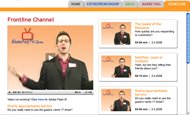
 I was born on Valentine’s Day.
I was born on Valentine’s Day. “I usually refuse to pay for mentoring. But after Scott’s first brain rental session, the fact that I had paid something to be working with him left my mind – as far as I was concerned, the value of that (and subsequent) exchange of wisdom and knowledge, far outweighed any payment.”
“I usually refuse to pay for mentoring. But after Scott’s first brain rental session, the fact that I had paid something to be working with him left my mind – as far as I was concerned, the value of that (and subsequent) exchange of wisdom and knowledge, far outweighed any payment.” After wearing a nametag twenty-four seven for a decade, my badge became a brand.
After wearing a nametag twenty-four seven for a decade, my badge became a brand. 
 Being remembered has less to do with you, and more to do with how people experience themselves in relation to you.
Being remembered has less to do with you, and more to do with how people experience themselves in relation to you. “I usually refuse to pay for mentoring. But after Scott’s first brain rental session, the fact that I had paid something to be working with him left my mind – as far as I was concerned, the value of that (and subsequent) exchange of wisdom and knowledge, far outweighed any payment.”
“I usually refuse to pay for mentoring. But after Scott’s first brain rental session, the fact that I had paid something to be working with him left my mind – as far as I was concerned, the value of that (and subsequent) exchange of wisdom and knowledge, far outweighed any payment.”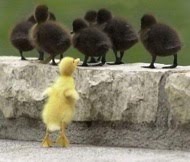 You can’t mute your way to success.
You can’t mute your way to success.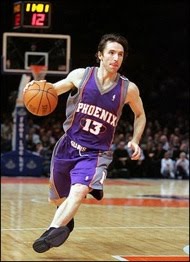 I was watching basketball at the time.
I was watching basketball at the time. Here’s what branding isn’t:
Here’s what branding isn’t:
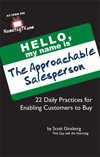
 Commitment changes everything.
Commitment changes everything. Not everything can be comfortably quantified.
Not everything can be comfortably quantified.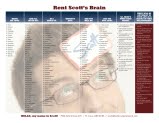 “I usually refuse to pay for mentoring. But after Scott’s first brain rental session, the fact that I had paid something to be working with him left my mind – as far as I was concerned, the value of that (and subsequent) exchange of wisdom and knowledge, far outweighed any payment.”
“I usually refuse to pay for mentoring. But after Scott’s first brain rental session, the fact that I had paid something to be working with him left my mind – as far as I was concerned, the value of that (and subsequent) exchange of wisdom and knowledge, far outweighed any payment.”